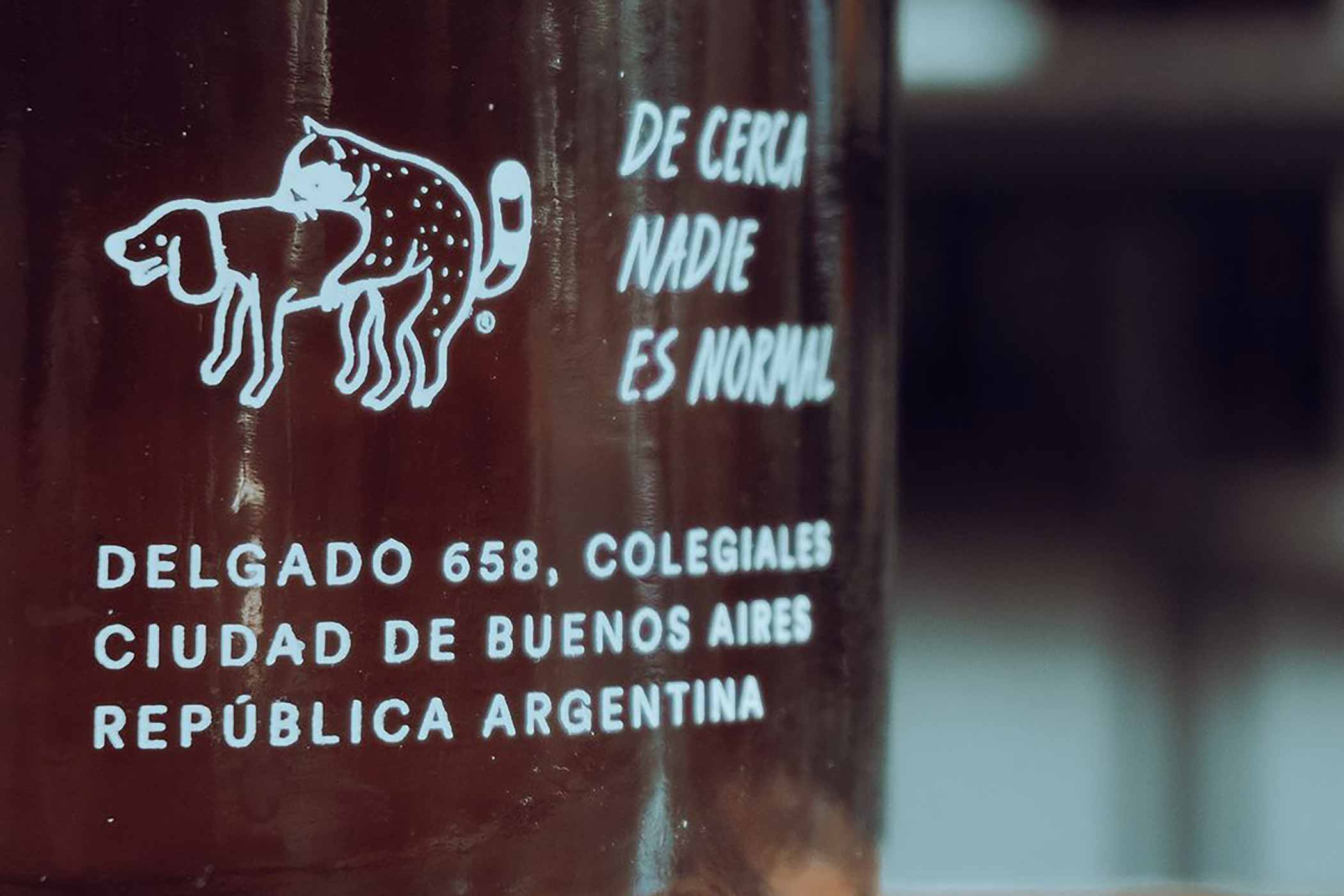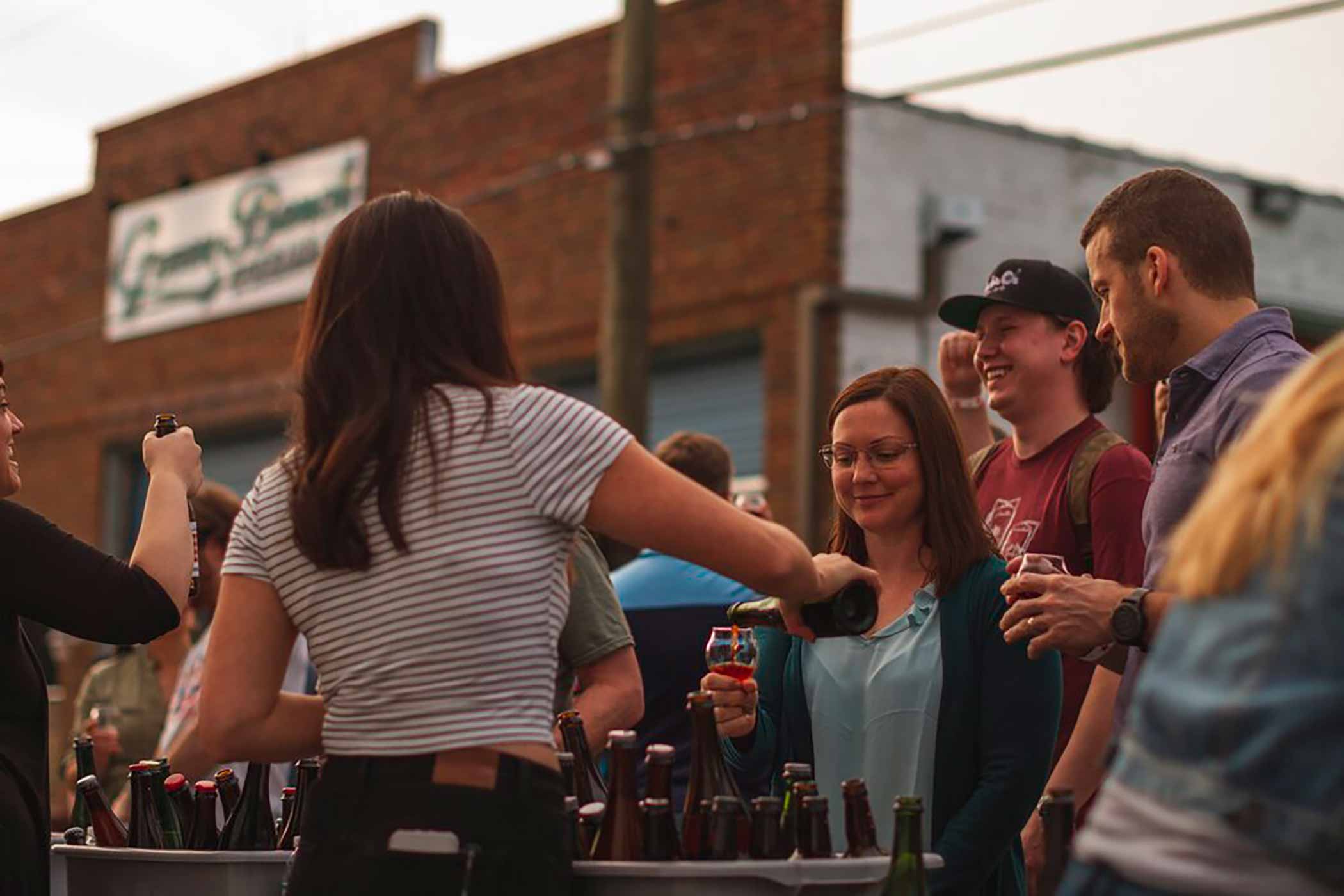Shop
A Norwegian, an Argentinian, and a Raccoon Walk Into a Bar: A Story as Strange as It Seems
From the Bay Area to Buenos Aires.
Looking for More?
This is a strange story. One where a Norwegian meets an Argentinian, and they fall in love…with raccoons, becoming their inspiration when they, of all things, open a brewery. Strange Brewing Co-Founders Torstein Hoset and Ramiro Galperin met as roommates in college at Stanford, a playground for these mischievous North American animals.
Interacting with raccoons every day in the Bay Area, “Is it okay to say we fell in love with them?” laughs Hoset, who moved with Galperin to Buenos Aires seven years ago to start Strange.
Today, you’ll find these misunderstood mammals as a sort of mascot for Strange.
Affectionally called Rocco by the brewery, these anthropomorphic raccoons dance like John Travolta Saturday Night Fever style on the can of a new hazy IPA; act as a therapist for a pilsner; and even engage in illicit activities with a dog. Hey, we don’t judge.
Just as we shouldn’t. As terrorizers of trash, raccoons inspire ire in most Americans. But with fresh eyes, Hoset and Galperin saw behind that dual-colored mask, finding the mischievously cute core underneath.
“We felt raccoons were quite misunderstood in the U.S.,” says Hoset, who says they like to think of the brewery’s raccoons as “entities.” “They’re just doing their best to make use of our scraps,” taking what one may consider trash and turning it into treasure.
Which, if we had to be honest, isn’t an entirely strange way to describe, well, Strange.
From the Bay Area to Buenos Aires
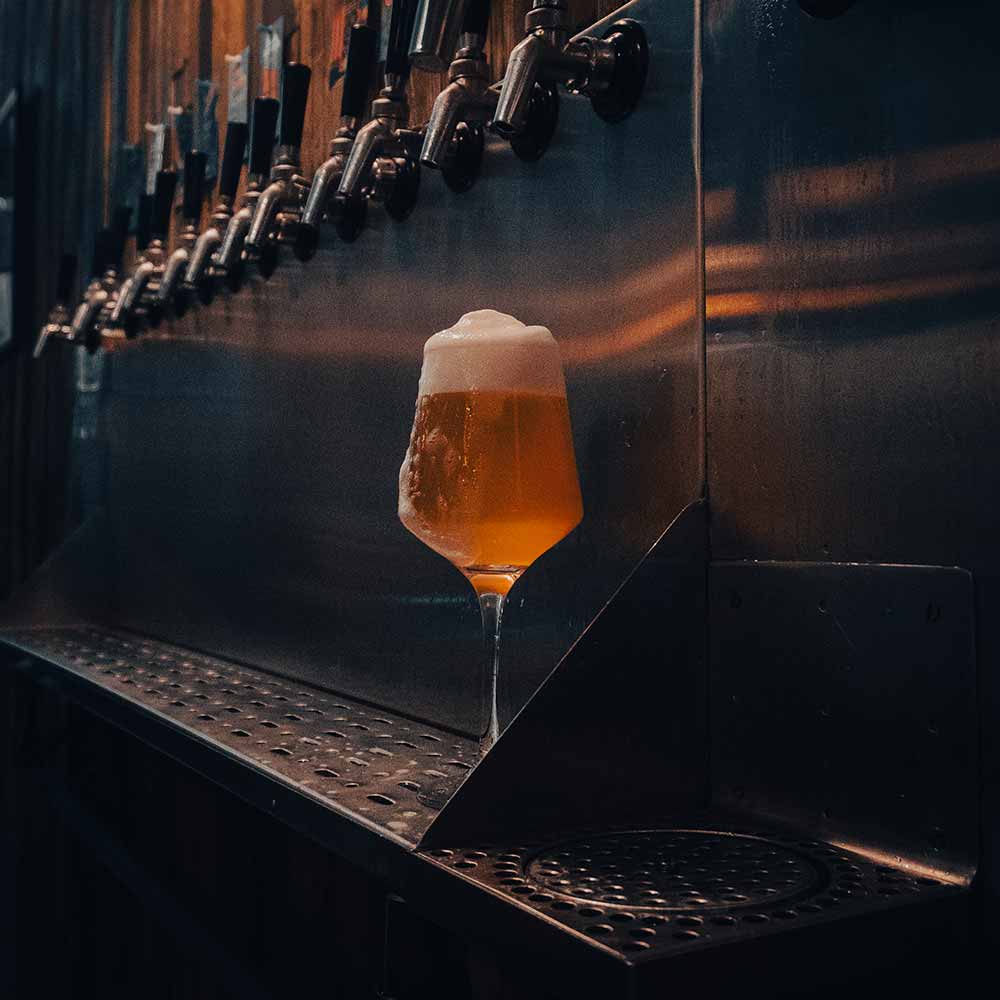
Photography courtesy of Strange Brewing
Inspired by Sierra Nevada Pale Ale, Hoset says that iconic beer played a big part in his introduction to craft beer when he first moved to the U.S. to go to college.
In fact, when he went home one Christmas holiday, he homebrewed a Sierra Nevada Pale Ale clone with his dad using a kit they’d bought together.
“I didn’t get to try that batch because I left to go back to school before it was done fermenting,” says Hoset.
When his dad visited a few months later, he brought some bottles for Hoset and his Argentinian roommate to try.
“We were pretty excited about it,” recalls Hoset. “At least it didn’t taste bad!”
Not long after, Hoset and Galperin, affectionately called Rachi, started brewing regularly. After moving into a co-op, the pair proposed becoming the house’s resident brewers. Whereas other folks living there had chores and responsibilities, Hoset and Galperin just needed to supply everyone with a steady cache of homebrewed beer.
“Somehow, they went along with it,” laughs Hoset.
Every Friday, for the house’s weekly barbecues, Hoset and Galperin showed up with a new beer.
Just brewing off a ten-gallon “super basic” homebrew kit, as Hoset described it, the duo’s weekly “chore” quickly turned into “somewhat of an obsession,” says Hoset. “By the time the year came to an end, I would say we were probably reading as much about brewing and business as we were about what we were actually supposed to be studying.”
Like when they spent months reading books on Trappist beers to brew a Belgian tripel.
“It was a big hit with our friends,” say Hoset, who revived that recipe seven years later at Strange. “I guess it felt like we had finally made a professional quality beer, but maybe our friends were just happy with the 9% ABV!”
In addition to reading and brewing, the Stanford student drove around to local breweries in his free time away from school.
“I’d peek my head in the door and be like, ‘Hey, can I come here and work for free for a couple of days?’” recalls Hoset.
While most said no, a few said yes—Third Street Aleworks, Midnight Brewing, and Anderson Valley Brewing Company, to be specific.
By the time graduation rolled around, Hoset and Galperin officially made a decision.
As Hoset plainly says, “We wanted to move down to Argentina and try to get funding for a brewery.”
A Road Trip Across Fourteen Countries in a Suzuki
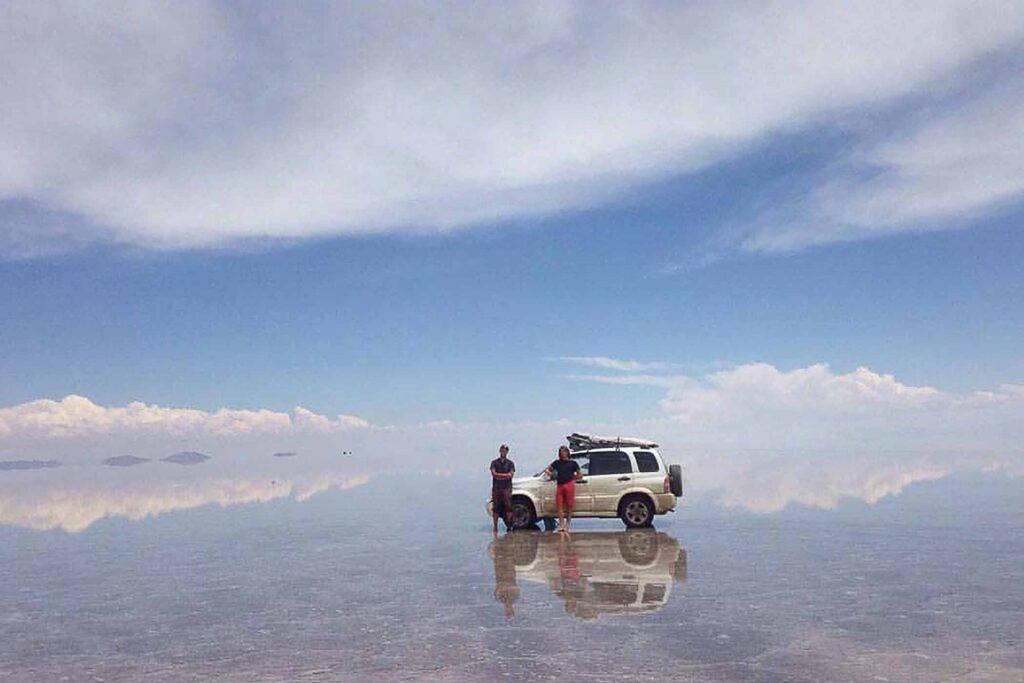
The early 2000s Suzuki Grand Vitara Strange Brewing Co-Founders Torstein Hoset and Ramiro Galperin drove from San Francisco to Buenos Aires | Photography courtesy of Strange Brewing
Buying a car in San Francisco, the recent college grads set off for Ramiro’s hometown of Buenos Aires.
Amazingly, the early 2000s Suzuki Grand Vitara survived the 6,400-some miles from Northern California to Western Argentina.
“That [car] took us all the way down there with stops along the way in every major surf town in Central and South America,” says Hoset, including México, Guatemala, El Salvador, Honduras, Nicaragua, Costa Rica, Panamá, Colombia, Ecuador, Perú, Bolivia, Chile, and finally, Argentina.
Good to know if you plan to make the same trip because typing in directions on Google Maps from San Francisco, California, to Buenos Aires, Argentina, displayed this message for us: “Sorry, we could not calculate driving directions.”
Honestly, we’re not sure how Hoset, Galperin, and the Suzuki survived. Hoset admits it barely did, rumbling into Buenos Aires with severe damage. Unsuitable for legal registration in Argentina due to a lack of papers, the car became patio furniture in Galperin’s parent’s house for five years. (For the brewery’s fifth anniversary, they brought the relic back out as a “museum piece,” says Hoset, “to tell the story of that trip. Nowadays, you’ll find Galperin’s handy uncle working to bring it back to life.)
As for Galperin and Hoset (who learned Spanish during the long drive), they worked as remote college application tutors to pay their way. In their free time, they read about beer, visited breweries, and put the finishing touches on their business plan.
“We arrived tired but pretty ready to get to work,” says Hoset.
Where’s the Craft Beer Here?
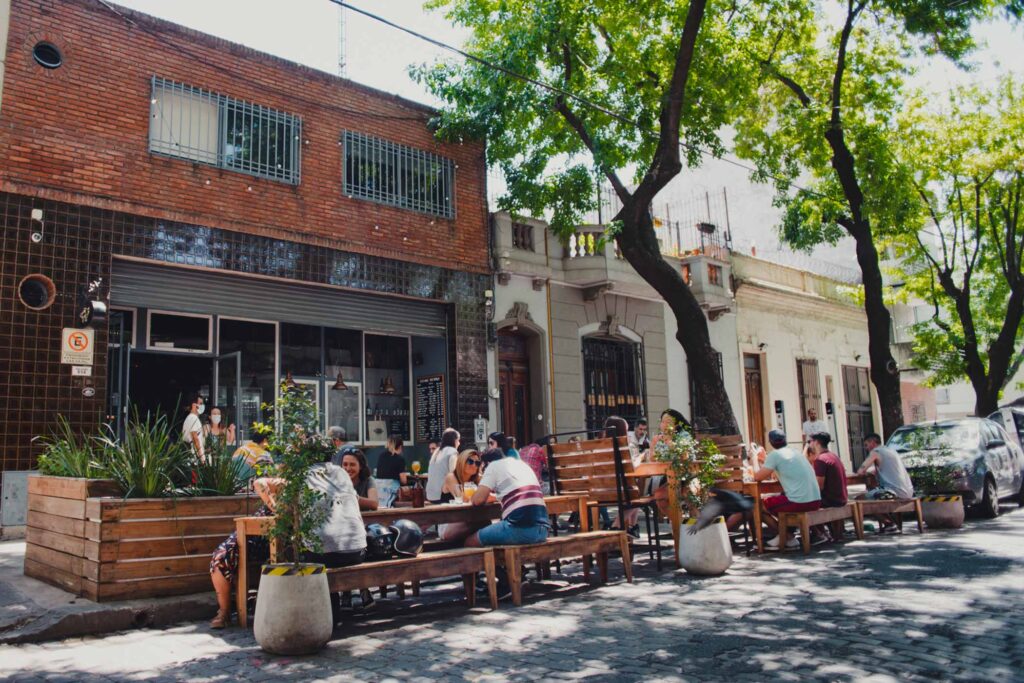
Photography courtesy of Strange Brewing
In 2016, Hoset described Argentina as a growing craft beer scene, getting more sophisticated.
“We arrived at the crest of the wave,” he follows. “Very good timing [because] we were able to harness a lot of the momentum that others had been building for years.”
But about as content to rest on their hindquarters as a hungry raccoon, Hoset and Galperin didn’t start Strange Brewing to be just another brewery in a sea of sameness.
Right out of the gate, they started brewing beer styles rarely seen, if at all, in Buenos Aires.
Words like hazy IPA, sour or mixed-fermentation beer, imperial stouts, and lager started showing up on (and in) lips because of Strange.
“I would say definitely [with] hazies, we were among the first, if not the first, to do it,” says Hoset. “And it’s too hot, so people don’t really get the whole sweet, thick imperial stout thing, but we did that relatively early on as well.”
Basically, Strange never took no for an answer.
Especially when people told Hoset and Galperin they would be crazy to do something like brew mixed-ferm beers. After all, no one had done it before.
“Everyone was telling us you’re not going to be able to sell it; you’re making way too much beer; maybe you can sell a couple of hundred bottles, but that’s it,” says Hoset. “The consumers proved everyone wrong.”
Sours, Lagers, and IPAs, Oh My
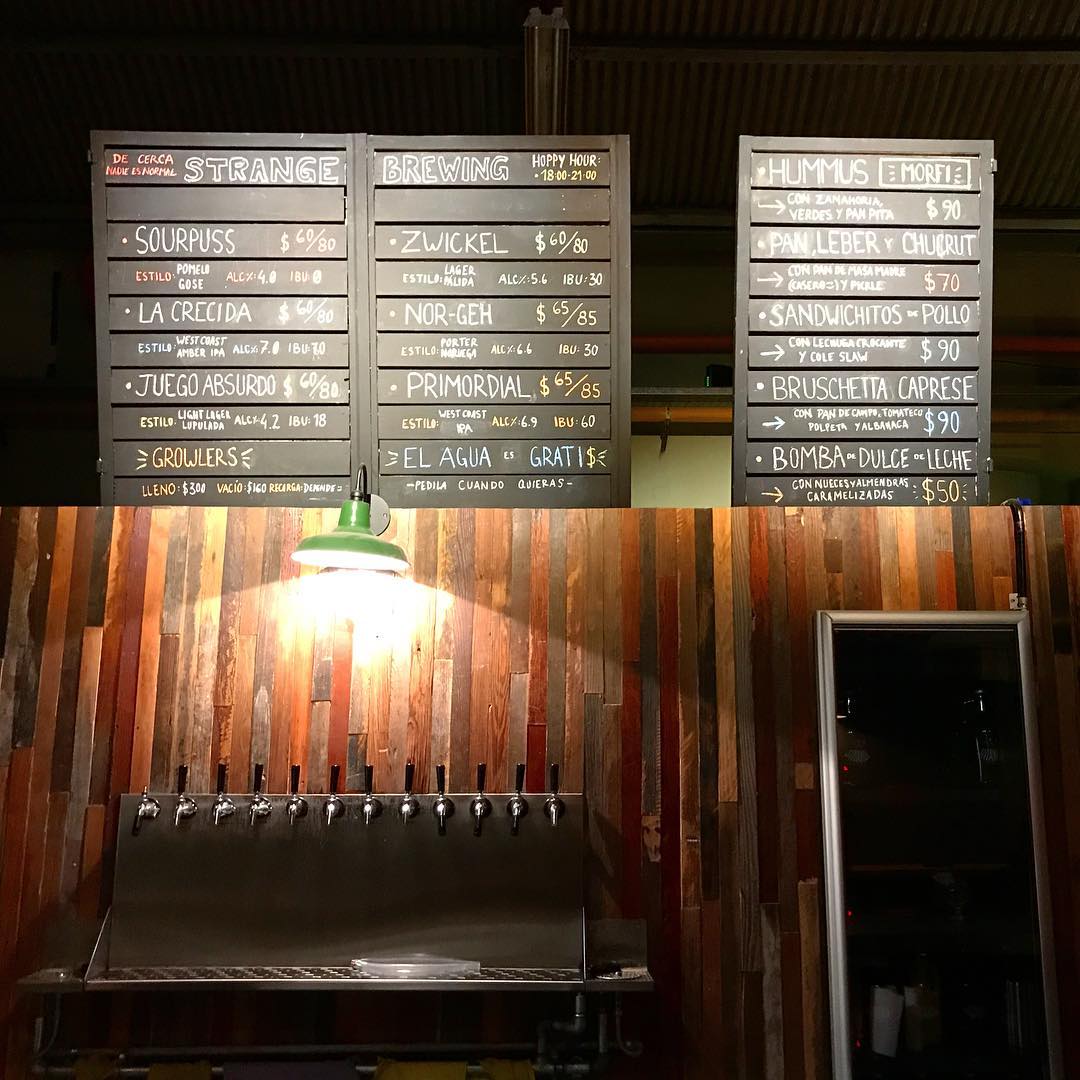
A taplist from the early days at Strange includes sours, IPAs, and lagers | Photography courtesy of Strange Brewing
In the past seven or so years, Strange has brewed somewhere between three hundred and four hundred different beers, Strange Brewing Brand Manager Patricio Torres (aka Pato) estimates.
From homebrewing at college barbecues to scraps of ideas in the heads of two guys driving across continents, Strange Brewing rose to take the throne as one of Argentina’s most popular breweries.
“With 27K check-ins on Untappd, Strange has the most check-ins of the top twenty highest-rated Argentinian breweries on Untappd—and their overall average of 3.97 ranks as the third-highest in all of Argentina,” wrote Hop Culture Social Media Manager Magic Muncie.
Hoset attributes their success to many of Strange’s core tenets.
“We don’t underestimate our consumers,” he says, noting that many people early on wrote off the Argentinian drinker’s palate as unsophisticated. “It’s definitely not the case. Argentinians love sour beer.”
Sours
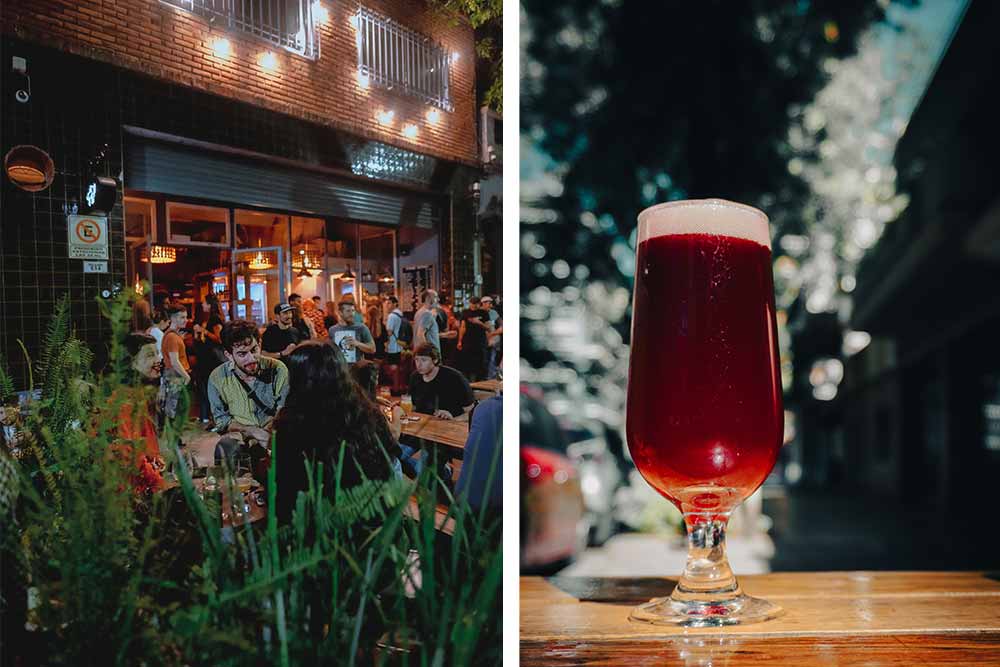
The outside of Strange Brewing’s taproom (on the left) and Sueños Sureños (on the right) | Photography courtesy of Strange Brewing
No sour tantalizes tastebud at Strange Brewing more than Sueños Sureños.
The barrel-aged mixed sour “draws on the abundance of amazing fruits we have access to in Argentina,” says Hoset.
Every single sour beer Strange makes exclusively uses Argentinian ingredients. Sueños Sureños, for instance, gets dosed with 250 grams per litre of blackberries, raspberries, and sour cherries grown in the Patagonia region in the south of Argentina.
Translating to Southern Dreams in English, this sour beer pays homage to a region “which every Argentinian, myself included as a quasi-Argentinian, are very fond of,” says Hoset.
Lagers
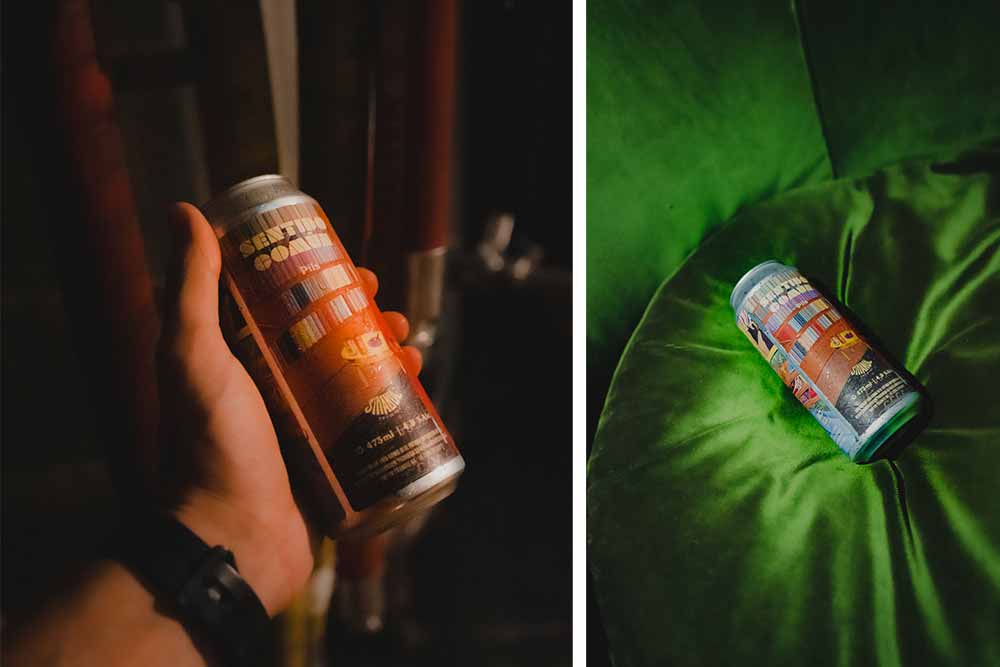
Photography courtesy of Strange Brewing
You’ll find respect for local products, land, and Argentinian people threaded across a variety of Strange’s beers.
For instance, Sentido Común, a German-style pilsner that Hoset speaks of proudly. “It’s a very simple German-style pilsner also made with Argentinian ingredients,” he shares. “The name means common sense, and that’s sort of the idea behind the name. … It’s a great beer, nice and simple.”
IPAs
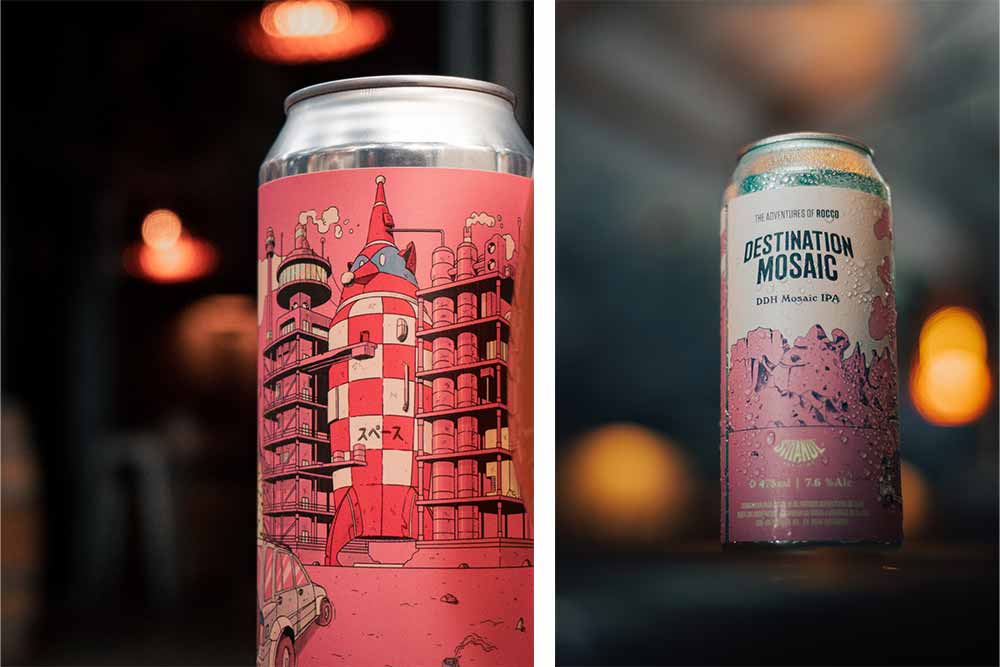
Photography courtesy of Strange Brewing
Strange didn’t keep things simple for themselves when they started hoppy beers. While the Argentinian brewery opened with a session IPA, they quickly branched out to hazies. A rarely seen style in Argentina in 2017, Strange’s excellent takes have propelled the style to popularity.
Today, Destination Mosaic is one of the most popular.
“It’s very well known and a part of Strange’s identity,” says Torres.
“Destination Mosaic is definitely the most, like how do you say? Emblematic beer,” says Torres, who speaks English very well but pauses momentarily to consult Hoset for the right word.
A double dry-hopped Mosaic IPA, Destination Mosaic is “sort of West Coasty, but a little bit lower on the bitterness,” says Hoset. “Kind of like a modern West Coast IPA; that’s definitely a beer we’re quite famous for.”
Oh My!
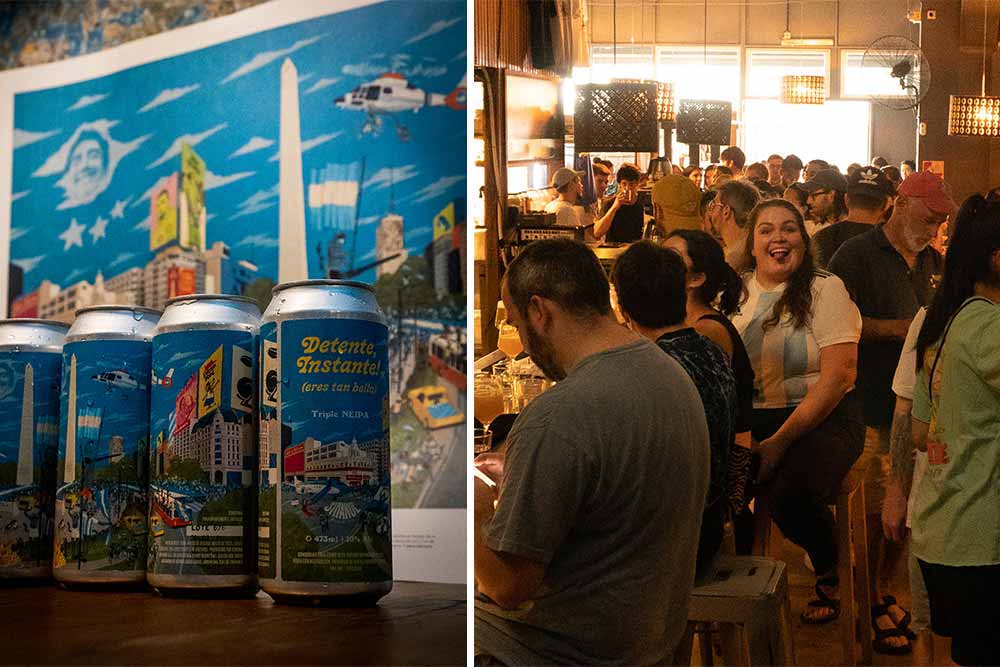
A beer brewed to celebrate Argentina’s World Cup win in 2022 | Photography courtesy of Strange Brewing
Or Detente, Instante! (eres tan bello), a 10% ABV TNEIPA—the brewery’s first—brewed to celebrate another first—renowned soccer star, Lionel Messi, leading Argentina to a World Cup victory in 2022, the only thing he hadn’t yet achieved in his illustrious career (at least according to many pundits).
The major milestone resonated across the country, which hadn’t won this title since 1986 (although they came runner-up twice since then).
“It was a beer that celebrated champions,” says Torres. During Argentina’s World Cup games, Strange opened at 7:00 am, offering coffee and croissants (and beer, of course) while they aired the games.
After the final between Argentina and France, Strange shut down the bar and celebrated with everyone in downtown Buenos Aires.
When the team returned from Qatar, Torres described the celebrations as epic, with around six million people taking to the streets.
“We had to make a beer for that moment,” says Torres.
Detente, Instante! (eres tan bello) takes inspiration from the Uruguayan poet Cristina Peri Rossi, whose book of the same name translates to Stop There, Instant! (you’re so beautiful).
Moments and beers like this tell you all you need to know about Strange.
The Future Looks Optimistically…Strange
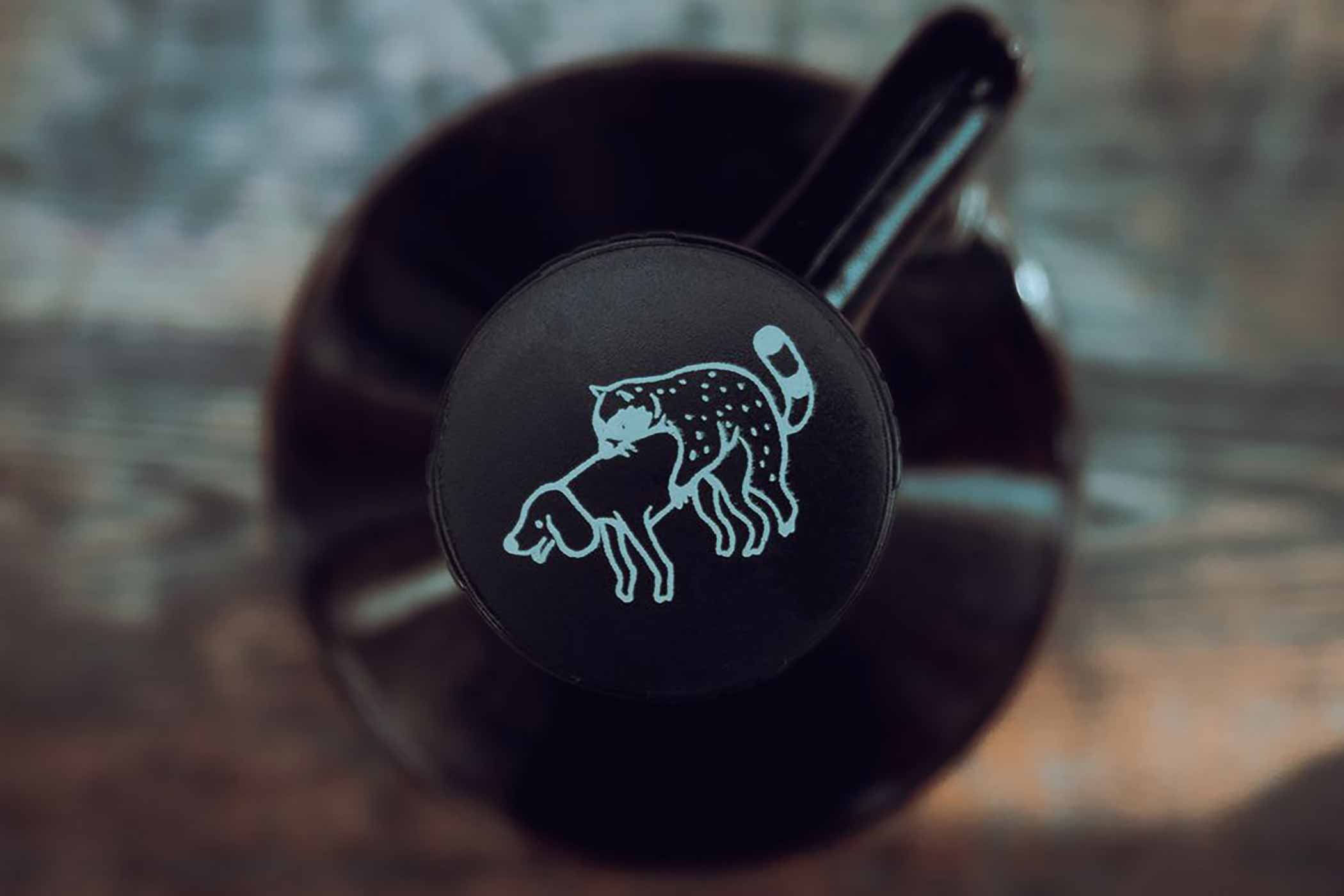
Photography courtesy of Strange Brewing
The future does look a little strange in Argentina, where the economy currently runs at around 200 percent inflation, according to Hoset. “It’s pretty hard to keep up with your margins to run a healthy business,” he says.
Even more reason for Hoset to quickly point out how grateful he is that people in Buenos Aires have embraced Strange and their raccoon spirit, Rocco.
To the point where they’ve grown big enough to open a second location in the Chacarita neighborhood, twenty blocks from the OG taproom.
As of publication, Hoset said they planned to open the new spot on Thursday, February 29, 2024, barring any unforeseen circumstances.
“We’re hoping to provide an equally strange but different experience at the new location,” says Hoset.
A story spanning continents, Strange Brewing has succeeded because they’ve never been afraid to fail, go against the grain, and get a little weird.
Where some see a misbehaving, maligned mammal, Strange sees something cool, curious, quirky, and a little mystical.
Does this really sound so strange to you?

